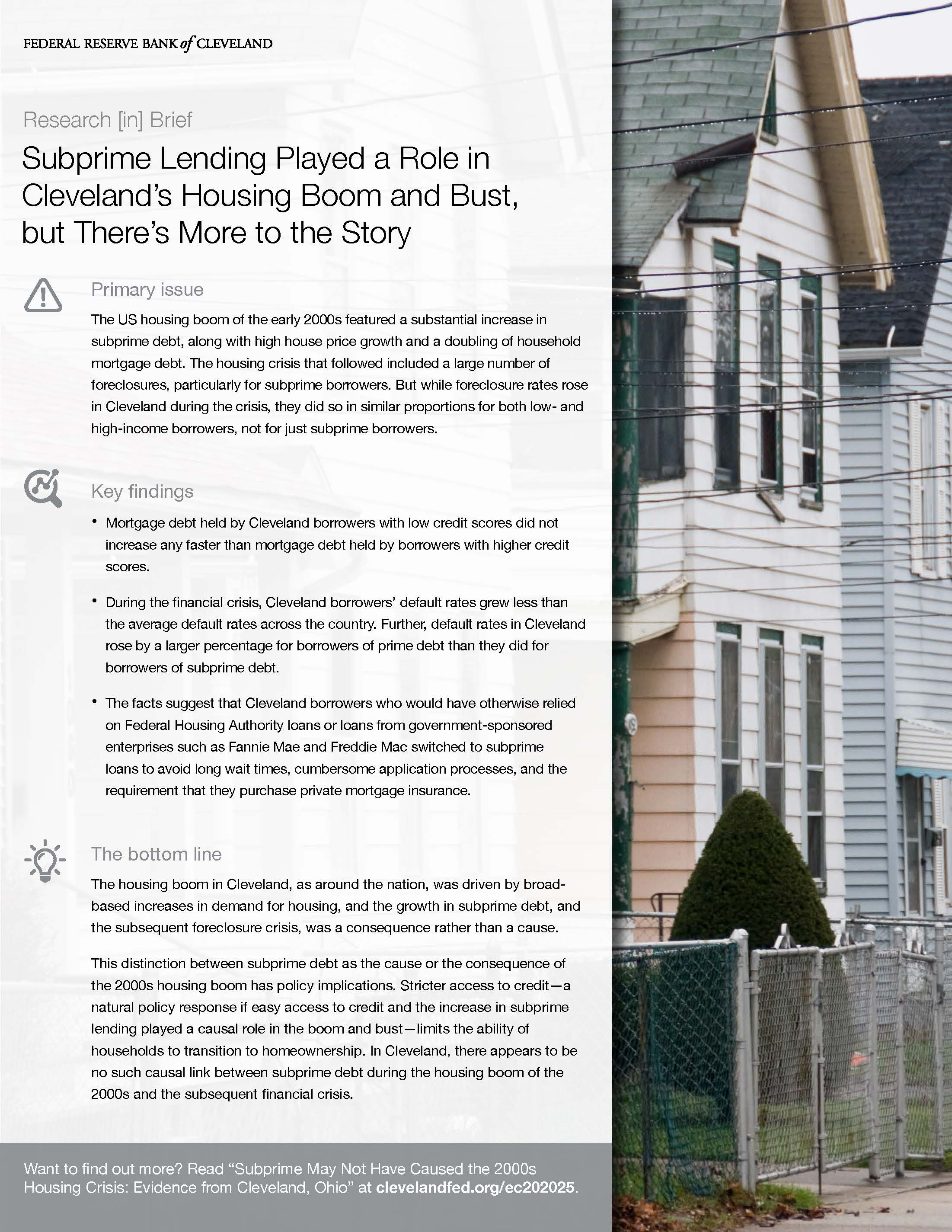- Share
Research [in] Brief: Subprime Lending’s Effects during the Boom and Bust
Infographic

Full text
Primary issue
The US housing boom of the early 2000s featured a substantial increase in subprime debt, along with high house price growth and a doubling of household mortgage debt. The housing crisis that followed included a large number of foreclosures, particularly for subprime borrowers. But while foreclosure rates rose in Cleveland during the crisis, they did so in similar proportions for both low- and high-income borrowers, not for just subprime borrowers.
Key findings
Mortgage debt held by Cleveland borrowers with low credit scores did not increase any faster than mortgage debt held by borrowers with higher credit scores.
During the financial crisis, Cleveland borrowers’ default rates grew less than the average default rates across the country. Further, default rates in Cleveland rose by a larger percentage for borrowers of prime debt than they did for borrowers of subprime debt.
The facts suggest that Cleveland borrowers who would have otherwise relied on Federal Housing Authority loans or loans from government-sponsored enterprises such as Fannie Mae and Freddie Mac switched to subprime loans to avoid long wait times, cumbersome application processes, and the requirement that they purchase private mortgage insurance.
The bottom line
The housing boom in Cleveland, as around the nation, was driven by broad-based increases in demand for housing, and the growth in subprime debt, and the subsequent foreclosure crisis, was a consequence rather than a cause.
This distinction between subprime debt as the cause or the consequence of the 2000s housing boom has policy implications. Stricter access to credit—a natural policy response if easy access to credit and the increase in subprime lending played a causal role in the boom and bust—limits the ability of households to transition to homeownership. In Cleveland, there appears to be no such causal link between subprime debt during the housing boom of the 2000s and the subsequent financial crisis.
Want to find out more? Read “Subprime May Not Have Caused the 2000s Housing Crisis: Evidence from Cleveland, Ohio” at clevelandfed.org/ec202025.
Related resources
Subprime May Not Have Caused the 2000s Housing Crisis: Evidence from Cleveland, Ohio
During the 2000s housing bust, Cleveland’s Slavic Village was dubbed “ground zero of the foreclosure crisis” by the national media. Despite this, during the preceding housing boom Cleveland had stable house price growth and relatively low mortgage debt growth, a stark contrast to circumstances in areas such as California that had exceptionally high house price and mortgage debt growth. What explains the relatively minor housing boom and perceived sharp downturn in Cleveland? In this Commentary I show that while subprime debt was a prominent source of debt in Cleveland and especially in its Slavic Village neighborhood during the 2000s, it is difficult to peg subprime debt as playing a causal role in the subsequent foreclosure crisis.

